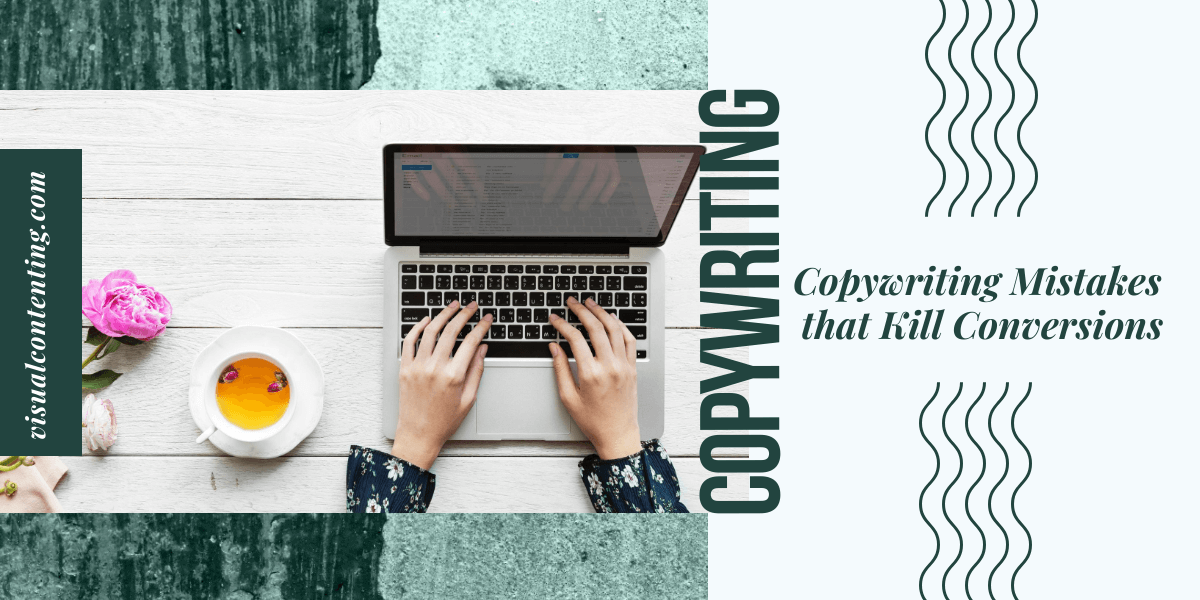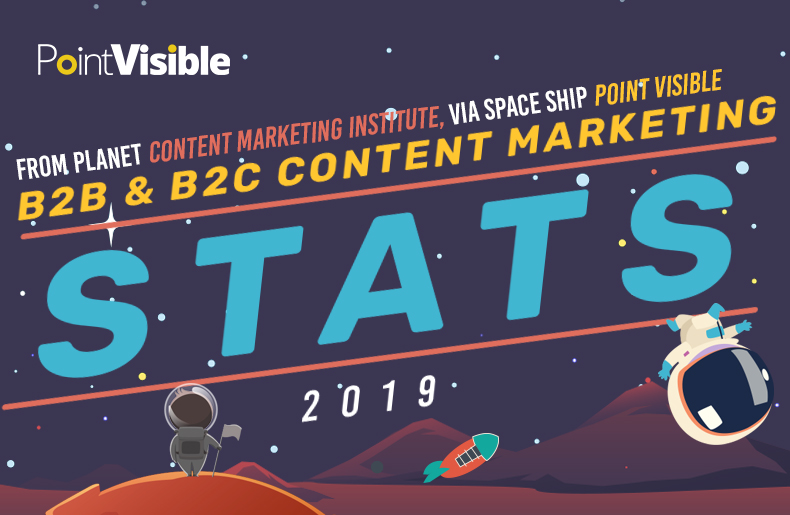When you write content, you have an ultimate goal in mind. This goal may be to increase sales, to boost your email list, to boost social media follows or a number of other final end goals. In order to reach these goals, you need to push visitors with a quality call to action. Every time you convert a visitor to a conversion you boost your end goal. However, you may be killing your conversion potential with a number of copywriting mistakes.
These copywriting mistakes are often minor and easily correctable. However, with every mistake you reduce the number of potential visitor conversions. That's exactly why you need to know what mistakes you're likely making and how to go about correcting these issues.
Writing to the Wrong Demographic
Every time you write something you have a target audience in mind. However, sometimes you’re writing to the wrong target audience. Or, even worse, perhaps you don’t understand or even know who your target audience is. This not only means your advertising material will focus on the wrong viewers, but your copy will fall on deaf ears and blind eyes, stunting any possibility of a conversion.
You need to understand your target audience and make sure you write specifically to those who are buying your products. Hopefully, you already have the analytical data to indicate who's buying your products. You can see the age range, gender, financial background, and other personal information. You can then write specifically toward this demographic.
It is important for every post to be directed towards a finely tuned individual though. Chances are you have several demographics buying your product. Don’t try to target all these individuals with every single post you write. While you can create the occasional post that is generalized to cover everyone, you want most of your content to be finely tuned and targeted to just one demographic.
Electronic companies that sell to both college students and senior citizens will not typically show both demographics using the product. Instead, the company will create marketing material to demonstrate how easy it is to use for one demographic, and the next generation features to another. When you write, know the targeted demographic and don’t try to go too broad with it. If you do, you’ll cut down on the conversion potential.
Writing to the wrong demographic will not only reduce your conversion rate but it may irritate recipients of your content. According to Sprout Social (and reported by Ignite Visibility), 51 percent of consumers who become irritated with their brand (including receiving incorrectly targeted content) will unfollow the brand. 27 percent will mark it as spam, while 23 percent will flat out boycott the brand.

Very little can be gained from not knowing your target audience or creating content for the wrong demographic. That is why before you write anything, you need to know whom it’s for and to write specifically for that targeted demographic.
Proofing Your Copy
It sounds so simple, yet it’s vitally important. You need to proof your copy for mistakes. Sure, the occasional grammatical error will slip through the cracks. We’re humans and will make mistakes. However, you need to do what you can to go through and correct all your spelling and grammatical errors.
Obvious mistakes look bad in the copy. The error becomes a red flag and something a reader instantly looks toward. The more obvious it is the more attention it siphons from the rest of the post. It may become the only thing a reader remembers regarding your post. The last thing you want is for a reader to only remember your grammatical error.
Poor spelling and grammar are commonplace in modern communication. If you were to look through text messages and IMs, you’d likely find more incorrectly formatted sentences than complete, grammatically accurate sentences. Despite this, grammar mistakes will harm your company’s profile.
According to Disruptive Communications, over 1,000 UK consumers were asked what would damage their opinion of a brand on social media. 42.5 percent said poor spelling and grammar. Too “salesy” posts came in at 24.9 percent. This shows you just how important it is to maintain excellent spelling and grammar.

The more important the content the more proofing you need and the more outside readers you need to take advantage of. If it’s your daily or bi-weekly blog post that only you proof, it should be enough.
However, if it is of critical importance, will serve as a landing page or will go out to thousands of clients, you need others to proofread the content as well. Fresh eyes will often catch mistakes a writer will not. There's a reason why book authors have lead editors and often a team of sub-editors to go through the text.
The more pronounced your proofing errors the worse off your breakthrough advertising becomes. You don’t want it to fall flat simply because you had a few spelling errors or used the wrong tense in one of your paragraphs.
Readers Can’t Scan Your Copy
If you're coming from the print world, or if this is your first go into the world of copywriting and you're used to reading books or long-form journalism, short paragraphs may seem a bit strange.
That's because, in the world of copywriting, a new paragraph doesn't mean a new idea. Often, it's the continuation of a previous idea. That would be a big no-no in a book. It also means War and Peace would likely be 500 pages longer, simply with added paragraph breaks.
So why is copywriting online so much different? Because you need to maintain a reader’s attention and you need to make copy easier to scan through. When someone buys a book, they are not scanning the pages. They’re reading it all. And even if they aren’t, the author and publisher won’t really care, because the person already bought the book.
With Internet copy, a person can back out and return to a search engine for other content that is easier to read. The vast majority of content online is not read. It’s skimmed. People want the basic idea of a post right out of the gate.
If they like it, they might read the entire blog. If they don’t, they’ve only lost a few moments of their time. Look over your copy. Every paragraph should be no longer than four sentences (and even that might be a bit long in certain instances).
The average attention span of a viewer varies based on how you’re interacting with through. Traditional storytelling styles (such as with a book or movie) is different from copy online. In fact, according to Ketchum, the average digital attention span in 2018 is six seconds. That's three seconds less than a goldfish.

Content that is not easy to scan requires a longer attention span. Most visitors to your page will not be looking for a traditional means of storytelling. They want their information now. They don’t want to wait for their meal. They want fast food.
Breaking up content is the best way to maintain an attention span (if someone can’t read a paragraph in six seconds they probably won’t last long on the page).
So even if it feels strange to do, break up your paragraphs into just a few lines. Yes, you're likely breaking up a single idea into multiple paragraphs, but you're not creating copy to follow English literature publication standards.
You’re creating copy to sell.
Your Copy Is Too Short
It might sound counterproductive to create long copy when visitors are only going to skim through it. In a way, it is backward. However, short copy does not perform as well as long copy.
There are several reasons for this. One is search engines such as Google like longer blog posts. Search engines do not want posts that contain a few hundred words. These posts are seen more as click-bait than as helpful information.
There’s a reason why authoritative blog posts rank higher than Quora questions. Yes, forum-based posts like Quora can be helpful, but these do not climb search engine result pages. Extended posts do.
So even if a visitor is only going to scan over your content and take a handful of key points from it, you need to write longer content because if it’s short and just a few hundred words, a potential reader won’t even find the blog post. It’s better to have a long post with visitors skimming it than a short post and no traffic.
According to Snap Agency (2018), the optimal word count for improved organic traffic is between 2,250 words and 2,500 words. The next highest performing blog length is above 2,500 words. If you want to increase your social shares, you’ll create blog posts of above 2,500 words. So, whatever you’re writing about, make sure the post is an optimal length.

Google is your most important copyreader, so do what you can to appease Google. Everything else will fall into place. In order to fully take advantage of Breakthrough Advertising by Eugene Schwartz, you need to create content that is easily found online. If it can’t be found, it doesn’t matter how great the content is.
In Conclusion
A simple mistake may be the difference between your copy generating the kind of conversions you’re interested in and falling flat on its face. It typically doesn’t take much to correct these mistakes, which makes boosting your copy’s return on investment and conversion potential that much higher. So even if you believe your content is already performing well, make sure to go through everything for these possible errors. You never know just how much more powerful your written copy can be.
Related Posts

I am an entrepreneur & coach specializing in business growth and digital and direct response marketing. I run a small coaching & consulting firm (OnlyOneMike.com) helping businesses achieve maximum profits. In 2012, I was on a weight loss TV show called Extreme Makeover: Weight Loss Edition.







